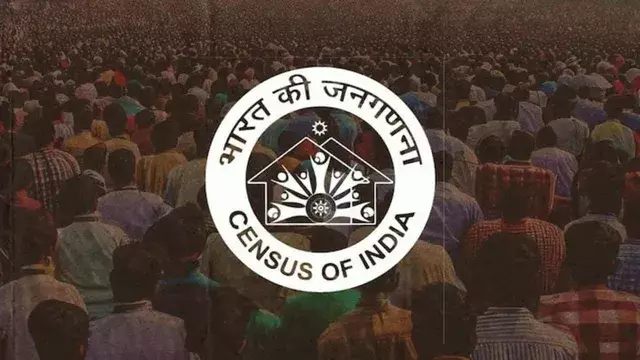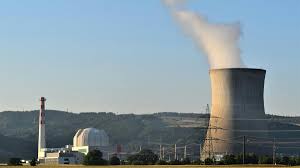- Courses
- GS Full Course 1 Year
- GS Full Course 2 Year
- GS Full Course 3 Year
- GS Full Course Till Selection
- Answer Alpha: Mains 2025 Mentorship
- MEP (Mains Enrichment Programme) Data, Facts
- Essay Target – 150+ Marks
- Online Program
- GS Recorded Course
- Polity
- Geography
- Economy
- Ancient, Medieval and Art & Culture AMAC
- Modern India, Post Independence & World History
- Environment
- Governance
- Science & Technology
- International Relations and Internal Security
- Disaster Management
- Ethics
- NCERT Current Affairs
- Indian Society and Social Issue
- NCERT- Science and Technology
- NCERT - Geography
- NCERT - Ancient History
- NCERT- World History
- NCERT Modern History
- CSAT
- 5 LAYERED ARJUNA Mentorship
- Public Administration Optional
- ABOUT US
- OUR TOPPERS
- TEST SERIES
- FREE STUDY MATERIAL
- VIDEOS
- CONTACT US
Balancing Power and Trust in the Bay of Bengal
Balancing Power and Trust in the Bay of Bengal

Why in the News?
- India's trade activity in the Bay of Bengal region is increasing. Trade through eastern ports like Visakhapatnam, Paradip, and Haldia has gone up.
- A new agreement under BIMSTEC (Bay of Bengal Initiative for Multi-Sectoral Technical and Economic Cooperation) was signed to make sea trade smoother and cheaper.
- However, India withdrew a trade facility for Bangladesh, which has caused tensions and raised concerns in the region.
What is BIMSTEC?
|
What are the Key Highlights?
- India stopped a facility for Bangladesh in April that allowed Bangladesh to send its goods to other countries using Indian ports.
- Reason:
- India said the reason was port congestion, meaning the Indian ports were too busy and causing delays for other exporters.
- Bangladesh saw this move as political, not just about logistics, and thought it was linked to its growing friendship with China.
- A speech by a Bangladeshi leader in China upset India, because he called India’s northeastern states "landlocked" and said Bangladesh was their only sea link.
- India felt hurt by this comment, as it believes the Northeast is very important and well-connected through Indian efforts.
- India’s Role in BIMSTEC
- India is trying to make BIMSTEC stronger and more useful.
- One agreement, called the BIMSTEC Maritime Transport Cooperation Agreement, aims to make trade easier by improving transport and customs systems.
- Small countries like Bhutan, Nepal, and Myanmar depend on Indian ports to trade with the world.
- Problem with Bangladesh’s Trade Access
- `India stopped allowing Bangladeshi goods to pass through its ports (trans-shipment facility).
- Earlier, this system helped Bangladeshi exporters, especially those in the garment industry, save time and money.
- Now, they may have to use ports in Sri Lanka or Southeast Asia, which are more expensive and slower.
- This makes trade harder for Bangladesh at a time when global demand is already weak.
- New Trade Restrictions by India
- In May, India banned seven types of goods from Bangladesh (like clothes, plastic, and food) from entering through land ports in Northeast India.
- These goods must now go through Indian sea ports like Kolkata or Nhava Sheva, which increases cost and time.
- India said it did this because Bangladesh had stopped yarn imports by land, but India had already removed the port access before that.
- Many people in Bangladesh feel India’s action is too harsh.
- Political Tensions Behind Trade Moves
- Some in India think Bangladesh is moving closer to China and reopening trade with Pakistan.
- They believe India is using trade restrictions to warn Bangladesh.
- But Bangladesh has the right to make its own foreign policy choices.
- Using trade as a way to send political messages goes against the idea of regional cooperation.
- Impact on the Whole Region
- This is not just a problem between India and Bangladesh but other countries like Myanmar, Thailand, and Sri Lanka are also watching.
- India had promised that trade and infrastructure would stay free from politics.
- Now, it seems that trade routes are becoming less cooperative and more political.
- India’s Strengths in the Region
- India has the best port infrastructure in the Bay of Bengal region.
- Its cargo-handling, coastal shipping, and transport networks are stronger than those of other BIMSTEC countries.
- But having good infrastructure is not enough to be a leader.
Why does India Focus on the Bay of Bengal?
- Strategic Location: The Bay of Bengal lies at the intersection of South and Southeast Asia, serving as a vital maritime and economic bridge. It is crucial for India’s Act East and Neighbourhood First policies.
- Trade and Economic Potential: BIMSTEC nations account for over 20% of the global population. Improved port infrastructure and proposed FTA could turn the Bay into a high-growth regional corridor.
- Connectivity Hub: India’s extensive port network, multimodal logistics, and trans-shipment capacity offer a backbone for regional integration and supply chain resilience.
- Geopolitical Leverage: A stable, economically integrated Bay region acts as a counterbalance to China’s growing influence, particularly in the Indo-Pacific and Indian Ocean Region (IOR).
- Energy and Blue Economy: The region holds untapped potential for energy cooperation, fisheries, and sustainable maritime economic activities.
What are the Challenges and Way Forward?
Challenges |
Way Forward |
1. Credibility Deficit: Trade facilitation appears inconsistent, politicised. |
1. Establish a rules-based mechanism that separates trade from political cycles. |
2. Regional Distrust: Smaller BIMSTEC partners wary of India’s dominance. |
2. Enhance transparency, consultative mechanisms, and mutual benefit frameworks. |
3. FTA Delays: BIMSTEC Free Trade Agreement remains stalled. |
3. Expedite FTA negotiations with focus on market access, tariff rationalisation, and NTBs. |
4. China’s Presence: China’s economic engagement with BIMSTEC members is growing. |
4. Offer competitive, reliable alternatives with focus on quality infrastructure and inclusive growth. |
Conclusion
The Bay of Bengal is both an opportunity and a test for India’s regional leadership. While India possesses the physical capacity to drive regional trade, true leadership will rest on sustained credibility and trust. By depoliticising trade, promoting inclusive regionalism, and reinforcing institutional mechanisms, India can ensure that the Bay of Bengal becomes a bridge not a barrier between South and Southeast Asia.
Ensure IAS Mains Question:Q. "India’s leadership in the Bay of Bengal region depends not just on capacity but also on credibility." In light of recent trade tensions with Bangladesh, critically examine India’s role in BIMSTEC. What are the key challenges, and how can India ensure that regional cooperation remains rules-based and resilient? (250 words) |
|
Ensure IAS Prelim MCQ: Q. With reference to BIMSTEC and India’s role, consider the following statements:
How many of the above statements is/are correct?
Answer: b Explanation: Statement 1 is correct: India does have the largest and most efficient port infrastructure among BIMSTEC members. Ports like Visakhapatnam, Kolkata, and Chennai are well-equipped, and India's multimodal logistics system is far ahead of other members in the region. Statement 2 is correct: The BIMSTEC Maritime Transport Cooperation Agreement is designed to improve maritime connectivity, streamline customs and transport procedures, and facilitate smoother sea trade across member states. Statement 3 is incorrect: Bhutan and Myanmar primarily rely on Indian ports for global trade. Bhutan, being landlocked, uses Indian ports like Kolkata and Haldia for most of its imports/exports. Myanmar, although it has a coastline, still uses Indian ports for some regional trade but not primarily Chinese ports for its general international trade. |
|
Also Read |
|
| FREE NIOS Books | |



